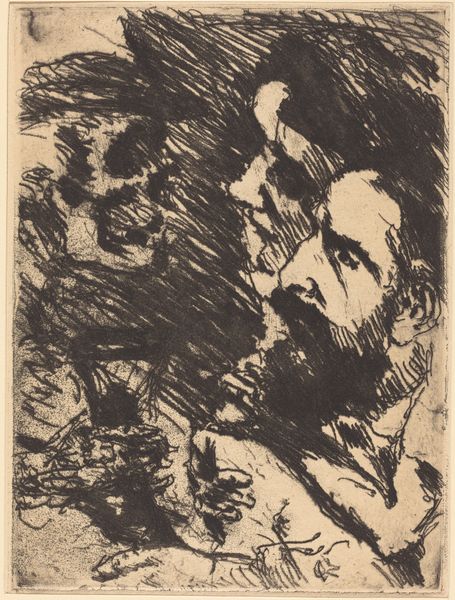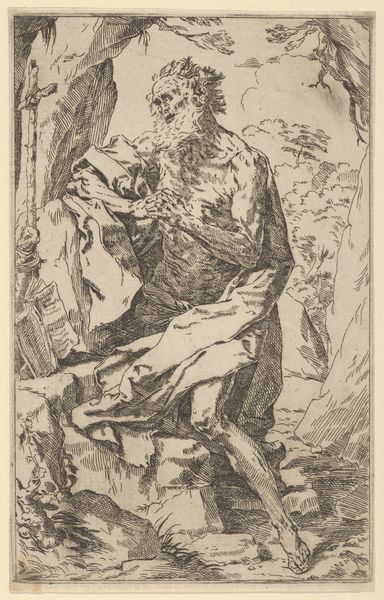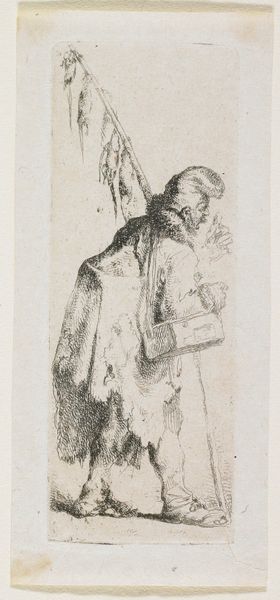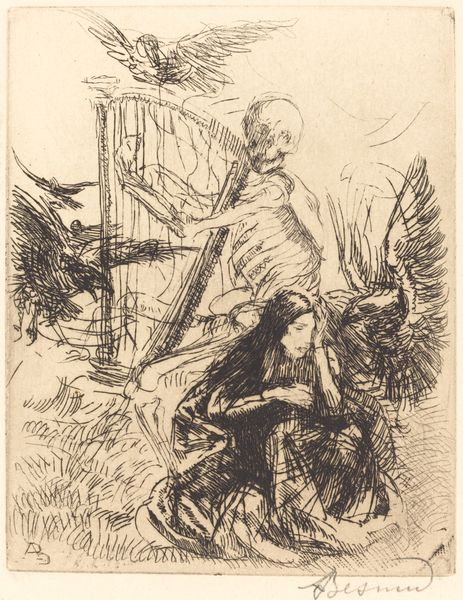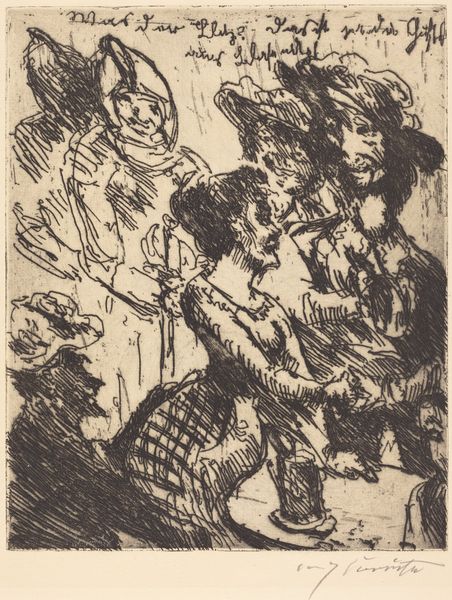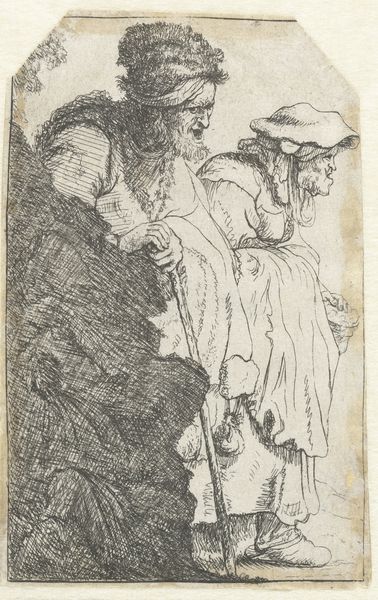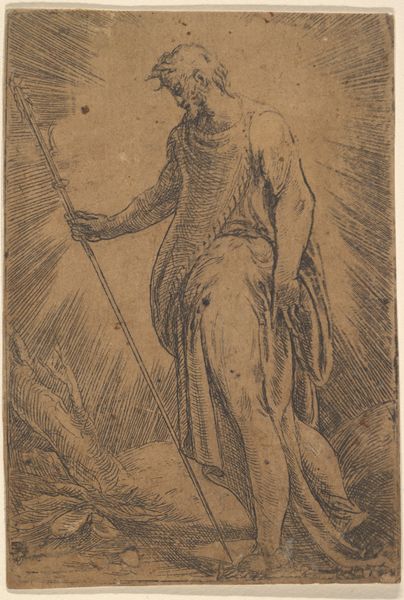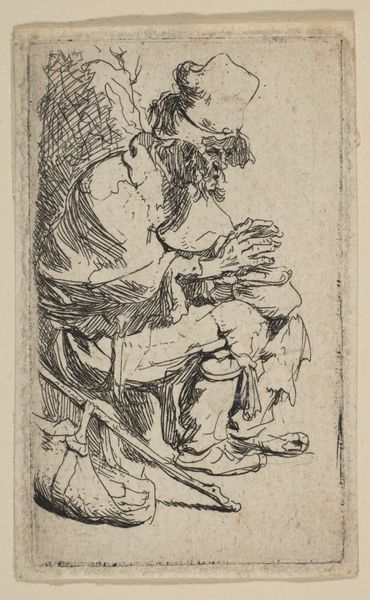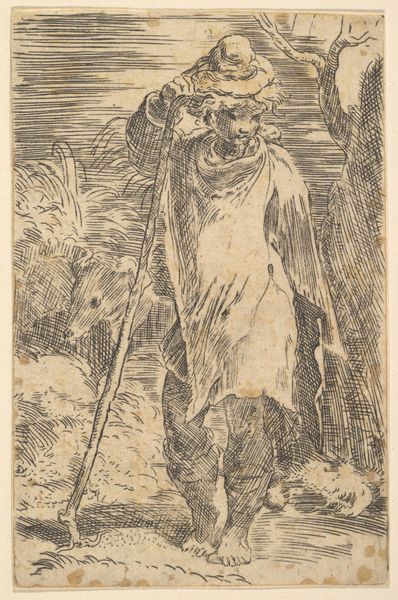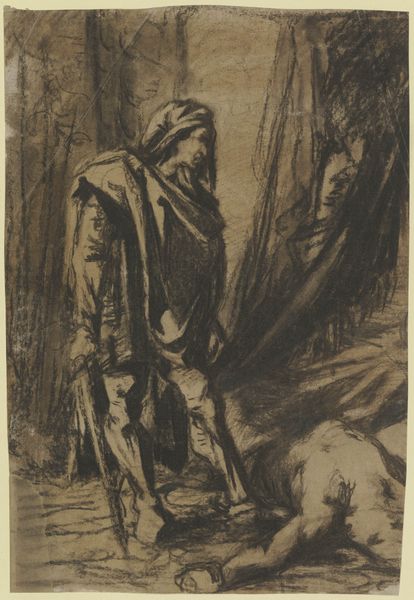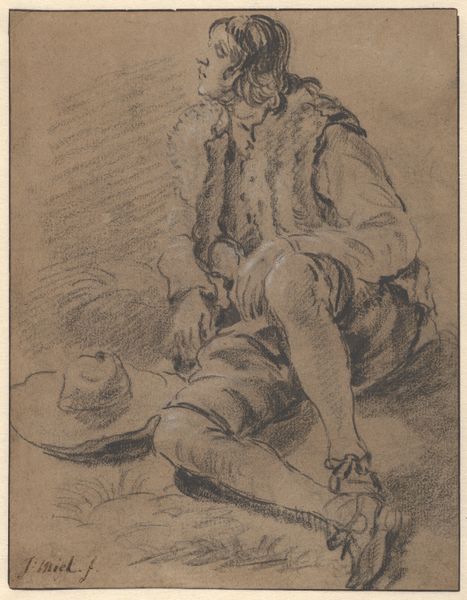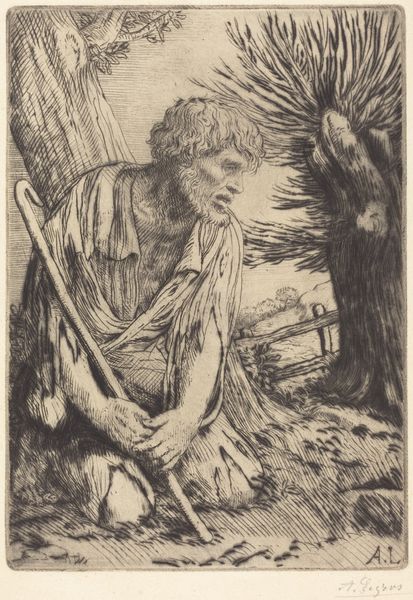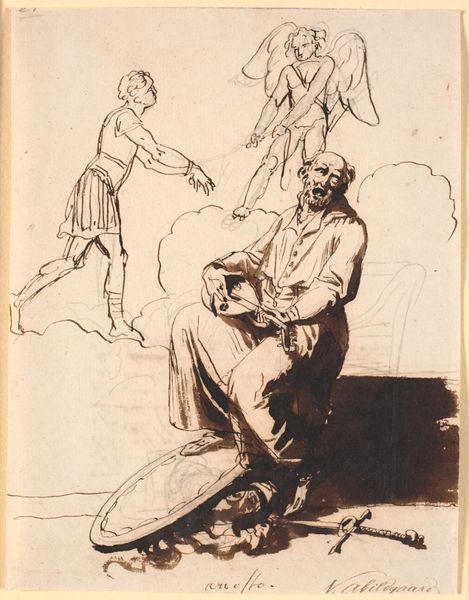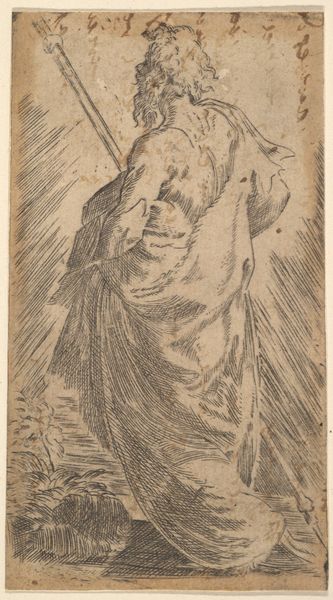
Tod und Jüngling (Death and the Young Man) Possibly 1921 - 1922
0:00
0:00
Dimensions: plate: 23.9 x 17.8 cm (9 7/16 x 7 in.) sheet: 30 x 23.8 cm (11 13/16 x 9 3/8 in.)
Copyright: National Gallery of Art: CC0 1.0
Lovis Corinth made this print, Tod und Jüngling, sometime in the early 20th century. It’s all about line, hatch marks really, that create the figures, which emerge from a kind of shadowy ground. The textures are rough, scratchy even; a jumble of marks. Look at the way the artist renders the face of the young man; it’s all done with a kind of feverish energy. The lines aren’t precious, they are urgent and raw. Then, beside him, the skull! It's a memento mori, a reminder of death. Corinth uses the same scratchy marks, but the effect is totally different. It’s like the lines are eating away at the form, decaying it right before our eyes. Corinth was part of the German Expressionist movement, and you can see that raw emotion in his mark-making. He's like a rougher, tougher version of Edvard Munch, wrestling with the same themes of life, death, and anxiety. Ultimately, it's a reminder that art isn't about perfection; it's about feeling, about process, and about facing the big, messy questions of existence.
Comments
No comments
Be the first to comment and join the conversation on the ultimate creative platform.
